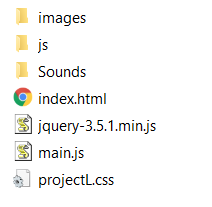Hi everyone, today I have uploaded a part of my game (the project is private) to see how it would perform. Unfortunately, the result wasn't good at all. The sounds and when the game switches backgrounds, at some points, take too long till they execute.
I have made that part using HTML, CSS, JS & JQUERY and the size of the Zip file that I have uploaded is almost 30MB.
Do you guys have any idea what the issue might be? Or should I make my project downloadable to prevent all of those weird issues from happening ?


